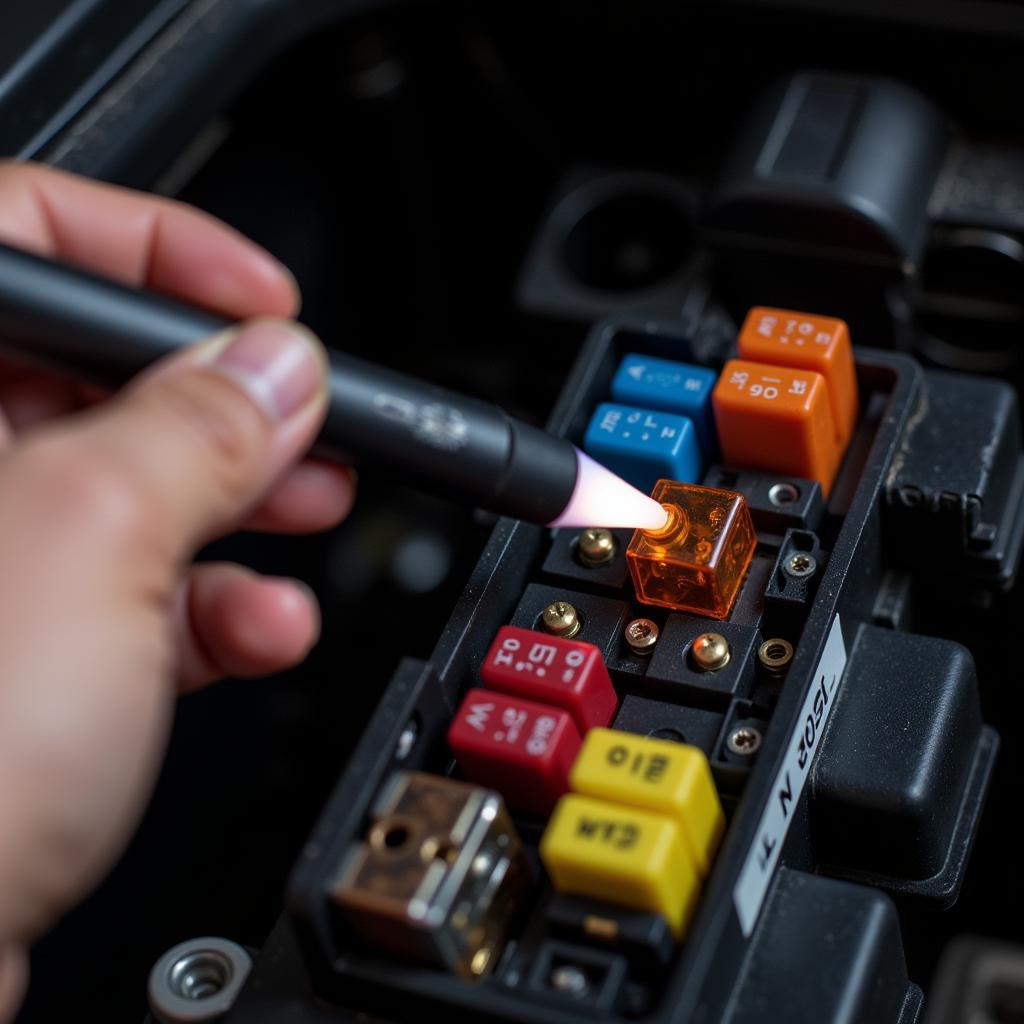Rust is the bane of every car owner’s existence. If left unchecked, it can spread like wildfire, compromising the structural integrity of your vehicle and even leading to costly repairs. Knowing How To Properly Fix Rust On A Car is essential for preserving its value and lifespan. This article provides a comprehensive guide on how to effectively tackle this common automotive problem.
Rust forms when iron is exposed to oxygen and moisture for an extended period. This electrochemical reaction creates iron oxide, which weakens the metal and causes it to flake and deteriorate. Understanding this process is crucial for choosing the right rust repair method. Let’s dive into how to address this issue head-on and prevent its recurrence.
Identifying and Assessing the Rust Damage
Before you start fixing rust on your car, you need to identify the type and extent of the damage. Surface rust is characterized by small, reddish-brown spots and can be relatively easy to treat. However, if the rust has penetrated deeper into the metal, creating holes or bubbles, it requires more extensive repair. A thorough assessment will help you determine the necessary tools and materials.
Tools and Materials for Rust Repair
Having the right tools and materials at your disposal is key to a successful rust repair. You’ll need:
- Sandpaper (various grits)
- Wire brush or wheel
- Rust converter
- Primer
- Automotive paint (matching your car’s color)
- Clear coat
- Safety glasses and gloves
- Masking tape and paper
- Body filler (for deeper rust damage)
Make sure to select high-quality products for optimal results and long-lasting protection. Using the correct tools and materials ensures a proper and durable fix, preventing the rust from reappearing quickly.
Step-by-Step Guide to Fixing Rust
-
Prepare the area: Clean the rusted area thoroughly with soap and water. Then, use sandpaper to remove any loose rust and paint around the affected area. For more stubborn rust, use a wire brush or wheel.
-
Apply rust converter: After removing the loose rust, apply a rust converter to the affected area. This chemical solution converts the remaining rust into a stable compound that can be painted over. This step is essential to prevent the rust from returning.
-
Apply primer: Once the rust converter has dried, apply a coat of automotive primer. The primer provides a smooth surface for the paint to adhere to and helps to protect the metal from further corrosion.
-
Sand and paint: After the primer has dried, lightly sand the area with fine-grit sandpaper. Then, apply several thin coats of automotive paint, allowing each coat to dry completely before applying the next.
-
Apply clear coat: Finally, apply a clear coat to protect the paint and give it a glossy finish. This helps to seal the repair and prevent future rust formation. Properly fixing paint peeling off car requires similar steps, ensuring the underlying metal is protected.
You can learn more about fixing various car issues like fixing car dvr or fixing memory steer gm cars by following these links.
Preventing Future Rust
Prevention is always better than cure. Regularly washing and waxing your car can help to prevent rust formation. You should also inspect your car for rust regularly, especially in areas prone to moisture accumulation, such as wheel wells and undercarriage. Taking proactive steps will save you time and money in the long run.
“Regular maintenance is the key to preventing rust. A little preventative care goes a long way in preserving your car’s value.” – John Smith, Automotive Engineer
Addressing issues like knowing who can fix aux port in car or if a flood damaged car can be fixed are also part of overall car maintenance and can prevent further problems.
How to Deal with Severe Rust Damage
For severe rust damage, where the metal is significantly compromised, you may need to replace the affected panel entirely. This requires more advanced skills and tools and may be best left to a professional auto body shop.
“When rust has eaten through the metal, patching it up is just a temporary fix. Replacing the panel ensures a long-term solution.” – Maria Garcia, Auto Body Repair Specialist
Conclusion
Fixing rust on your car might seem daunting, but with the right knowledge and tools, it’s a manageable task. By following the steps outlined in this article on how to properly fix rust on a car, you can effectively restore your car’s appearance and prevent further damage. Don’t let rust ruin your ride! Contact AutoTipPro at +1 (641) 206-8880 or visit our office at 500 N St Mary’s St, San Antonio, TX 78205, United States for expert assistance and advice.
FAQ
-
What causes rust on a car? Rust forms due to the electrochemical reaction between iron, oxygen, and moisture.
-
Can I fix rust myself? Yes, minor rust can be fixed at home with the right tools and materials.
-
When should I take my car to a professional for rust repair? If the rust has penetrated deeply into the metal, it’s best to consult a professional.
-
How can I prevent rust on my car? Regular washing, waxing, and inspections can help prevent rust formation.
-
What is a rust converter? A rust converter is a chemical solution that transforms rust into a paintable, stable compound.
-
Is it necessary to use a primer? Yes, primer provides a smooth surface for paint adhesion and protects the metal.
-
What type of paint should I use for rust repair? Use automotive paint that matches your car’s color.





Leave a Reply